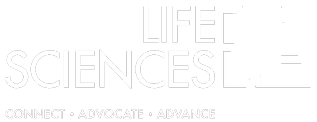Source: UBA
HR professionals often spend a good amount of time shuffling paperwork and ensuring that benefits, policies and procedures are properly expressed in writing. While those tasks can be complicated and tedious, they can provide protection if a compliance issue arises — as long as the documentation is correct.
For instance, employers are required to provide a summary plan description (SPD) for health insurance plans. Many employers, though, confuse SPDs with the certificate of coverage they receive from their insurance carriers, according to Richard Schwartz, a partner with law firm Seyfarth Shaw.
In a recent webinar, reported in PLANSPONSOR, Schwartz noted that the certificate of coverage satisfies insurance laws but doesn’t always fulfill requirements under ERISA.
“There’s some exposure out there, if upon audit the [Department of Labor] asks [an employer] for their SPD,” Schwartz said. Inquiries from workers for SPDs that turn out to be improper also can send up red flags to the DOL. The worst-case situation for employers is going to court with an inadequate SPD in hand, Schwartz said.
Schwartz said employers should spend some time reviewing their SPDs and press insurers or any third-party administrators to correct problems or fill in missing provisions.
Along with SPDs, employee handbooks are critical when employers face employee lawsuits or any heat from government agencies. And just like SPDs, the effectiveness of employee handbooks often hinges on the details of the language. When it comes to wage-and-hour issues — which make up a big portion of employee-instigated lawsuits — handbooks need to clearly explain workers’ rights, legal considerations and company procedures, according to a report by Khristine Scholtz in SmartHR Manager.
At a minimum, handbooks should include sections on the following:
- Explanations of how pay and hours are calculated. Employers also may want to include language that describes the difference between exempt and nonexempt employees.
- A provision that protects against the accidental docking of pay.
- Criteria for overtime pay, including details on calculations and who must approve the overtime.
- Information about federal and state laws that apply to wage-and-hour issues.
Because handbooks are often at the center of litigation issues, employers should ensure that they also cover as many federal and state laws as possible, including the Americans with Disabilities Act, the National Labor Relations Act and the Family and Medical Leave Act, Scholtz added.




